713 Visual Literacy: Making Meaning from Images
2:30 PM - 3:30 PM Wednesday, March 27
Instructional Design
Salon 18
Take a look at these situations: (1) Your client insists on having at least one image per page. They don’t care which images you choose. (2) You realize that the course you are developing is very text-heavy, so you decide to add some images to break it up. (3) You find a really awesome image, so you add it to your next course. Sound familiar? Probably. So ask yourself two questions: “Did I really think about the images before using them?” and “Were any of the images confusing, ambiguous, or irrelevant?” Be honest with yourself. How do you choose the images that will convey meaning for your learners?
Images convey more information and meaning than text alone. But sometimes an image can unintentionally convey the wrong meaning. Or designers assume that everybody will make the same meaning from an image. You need to be intentional about your choices; you must be mindful of how photographs, illustrations, diagrams, infographics, symbols, icons, shapes, colors, etc., create meaning for your learners. You must be visually literate. This session will introduce you to the concept of visual literacy, and how it will make you think differently about how and why you choose images. After leaving this session, you’ll never look at an image the same way again.
In this session, you will learn:
- About visual literacy competency standards
- How elements of art and principles of design convey meaning
- The seven steps for assessing images for meaning and relevance
- Core strategies for developing your own visual literacy skills
Audience:
Designers and developers

Sarah Dewar
Educational Technology Specialist
Michael Garron Hospital
Sarah Dewar is a seasoned instructional designer and developer. She has over 20 years of experience in the realm of adult learning, complemented by 15 years of experience creating innovative eLearning solutions for healthcare professionals. Sarah is currently developing a virtual reality training solution to orient healthcare workers to a new state-of-the-art healthcare centre. She also creates custom animation to engage learners. Sarah shares her knowledge internationally and volunteers her expertise to not-for-profit organizations.





